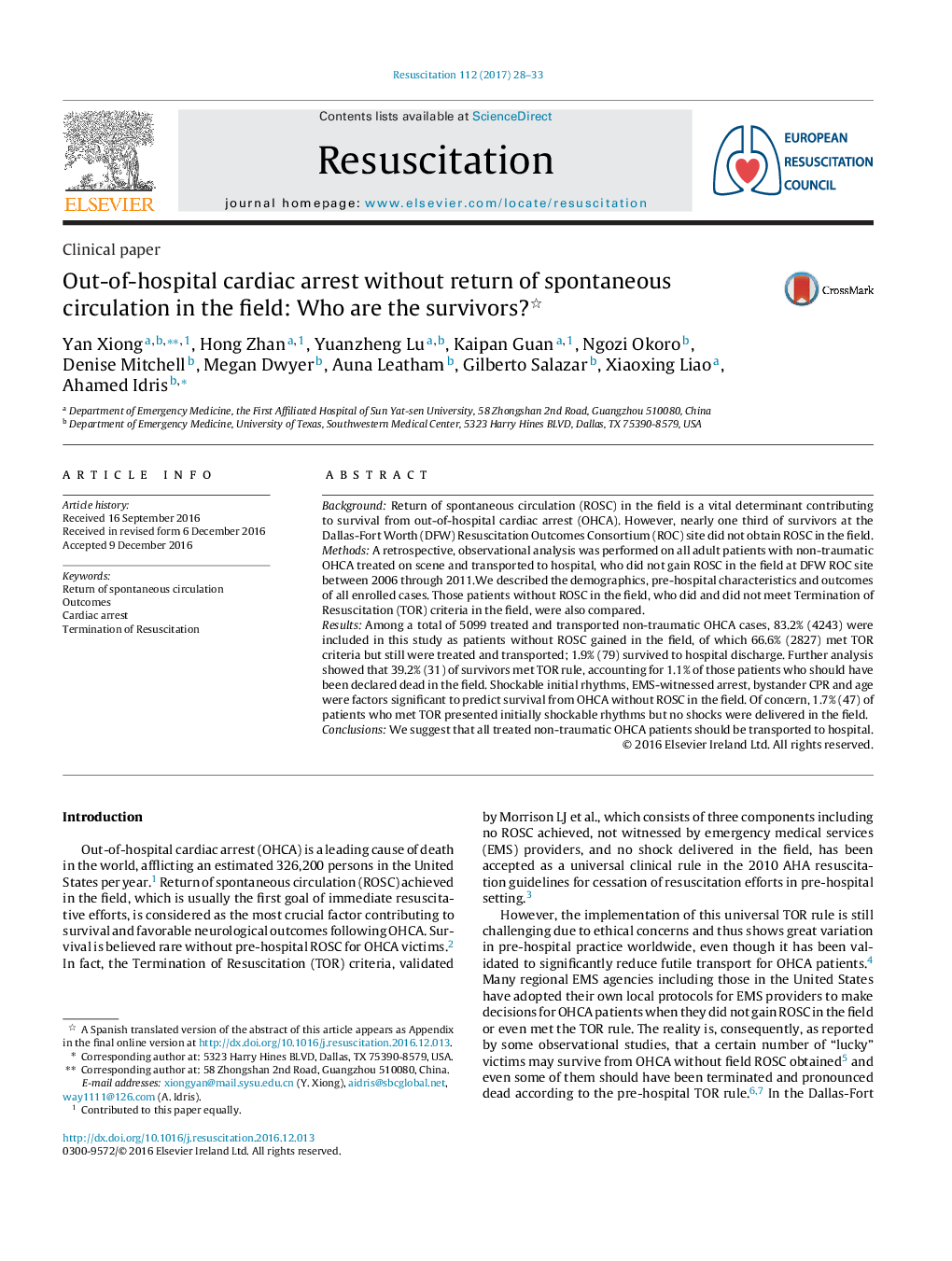| Article ID | Journal | Published Year | Pages | File Type |
|---|---|---|---|---|
| 5620186 | Resuscitation | 2017 | 6 Pages |
BackgroundReturn of spontaneous circulation (ROSC) in the field is a vital determinant contributing to survival from out-of-hospital cardiac arrest (OHCA). However, nearly one third of survivors at the Dallas-Fort Worth (DFW) Resuscitation Outcomes Consortium (ROC) site did not obtain ROSC in the field.MethodsA retrospective, observational analysis was performed on all adult patients with non-traumatic OHCA treated on scene and transported to hospital, who did not gain ROSC in the field at DFW ROC site between 2006 through 2011.We described the demographics, pre-hospital characteristics and outcomes of all enrolled cases. Those patients without ROSC in the field, who did and did not meet Termination of Resuscitation (TOR) criteria in the field, were also compared.ResultsAmong a total of 5099 treated and transported non-traumatic OHCA cases, 83.2% (4243) were included in this study as patients without ROSC gained in the field, of which 66.6% (2827) met TOR criteria but still were treated and transported; 1.9% (79) survived to hospital discharge. Further analysis showed that 39.2% (31) of survivors met TOR rule, accounting for 1.1% of those patients who should have been declared dead in the field. Shockable initial rhythms, EMS-witnessed arrest, bystander CPR and age were factors significant to predict survival from OHCA without ROSC in the field. Of concern, 1.7% (47) of patients who met TOR presented initially shockable rhythms but no shocks were delivered in the field.ConclusionsWe suggest that all treated non-traumatic OHCA patients should be transported to hospital.
